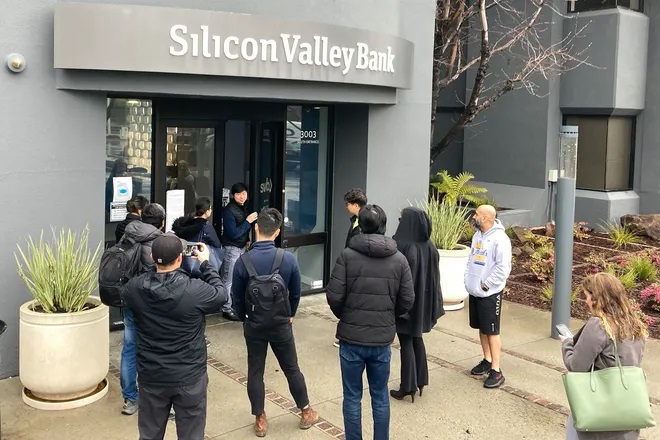The sudden collapse of Silicon Valley Bank (SVB) — the nation’s 16th largest bank — and Signature Bank have changed the financial landscape. Stephen Solaka, managing partner at Belmont Capital Group, wrote, “Sentiment went very quickly from very bullish to very bearish.” After the collapse of those banks, some investors are bracing for other cracks in financial markets, or for the pressure on regional banks to extend to other parts of the economy.
To mitigate the damage, the United States Treasury Department, Federal Reserve, and Federal Deposit Insurance Corporation announced a series of measures on Sunday, March 12, to reassure individuals and businesses of the stability of the U.S. banking system. They introduced at least two major changes:
- SVB’s and Signature’s uninsured depositors would receive a “systematic risk exception” to cover their uninsured deposits. Without this ruling, companies holding uninsured deposits could not pay their employees and their bills. Eighty-eight percent of the depositors at SVB and 90% of the depositors at Signature Bank were uninsured.
- The Federal Reserve created a new lending facility, called the Bank Term Funding Program, that enables banks to borrow cash (100% of face value) in exchange for posting government securities and/or government-guaranteed mortgages as collateral. This facility will offer loans for up to one year.
The failure of SVB and Signature Bank, the second and third largest bank failures in U.S. history, heightened investor concern about the health of our banking industry.
On March 13, Moody’s Investor Service reduced its credit rating on the entire banking system to negative from stable. In its downgrade of the entire sector, Moody’s noted that despite the extraordinary efforts taken to shore up impacted banks, other institutions with unrealized losses or uninsured depositors could be at risk. Moody’s wrote: “Banks with substantial unrealized securities losses and with non-retail and uninsured depositors may still be more sensitive to depositor competition or ultimate flight, with adverse effects on funding, liquidity, earnings and capital.”
To mitigate risk, investors are seeking the shelter of safer assets such as cash, Treasury bills, money market funds and U.S. Treasuries mutual funds. The yield on the two-year treasury in the days following the government’s intervention logged the sharpest one-day decline since the Black Monday crash (1987).
The markets for the world’s safest and most liquid assets, the government bonds issued by the U.S., has lost significant liquidity. Government bond prices have not seen swings such as these since the early 1980s, when Paul Volcker was chairman of the Federal Reserve. When it becomes difficult to buy and sell Treasuries, the resulting turmoil can spread to other assets from stocks to currencies. The fear of economic distress has pushed investors to dump riskier assets in favor of safer ones.
Was there a regulatory failure?
Under pressure from banks in 2018, Congress passed legislation that shielded smaller banks, like SVB and Signature Bank, from more stringent rules. The banks made the case that because they were small, they posed little risk to the broader financial system. We now recognize that the breakdown of even midsized banks can threaten the financial system as a whole.
The Federal Reserve is considering extending capital and liquidity requirements to midsize banks — firms with assets between $100 billion to $250 billion. A number of capital and liquidity requirements are being investigated, including beefing up the annual “stress tests” that assess banks’ ability to weather a possible recession.
The decline in the stock price of regional banks reflects concerns that the financial difficulties of one or more banks will spill over to the financial system as a whole. The risks to the U.S. economy are twofold. We need to address inflation and secure financial stability.
Originally published in the Sarasota Herald-Tribune




